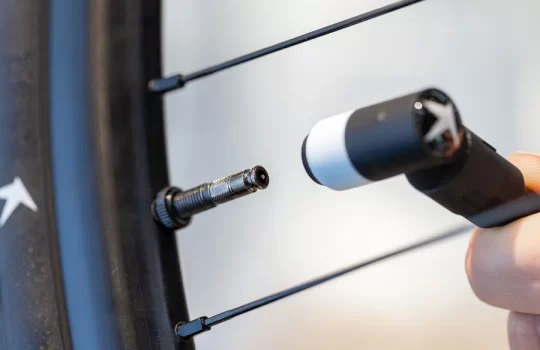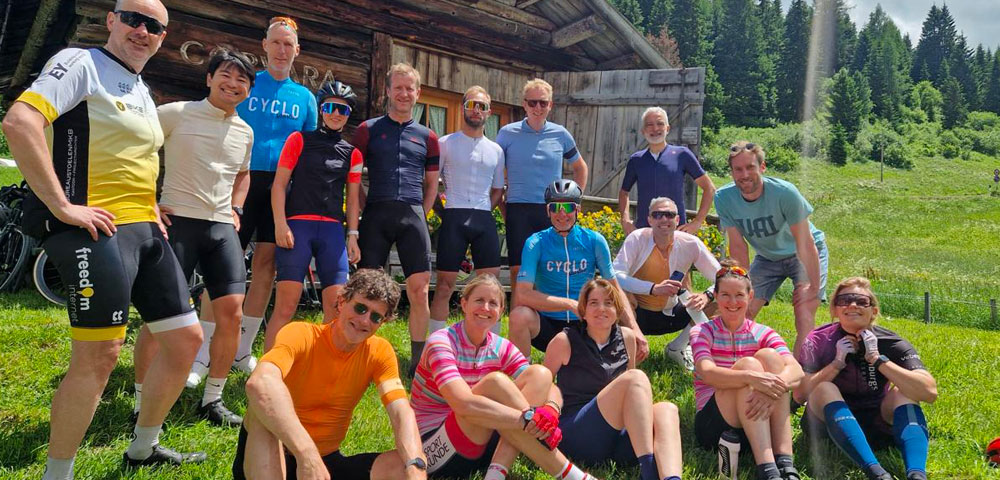10 useful clothing tips for cycling in the mountains
This way you prevent yourself from getting too cold or too hot
I descend, my teeth chattering from the cold. This cycling day in the mountains started with 20 degrees and light clouds in Bormio. I'm going to climb, so I'll start short-short. On the way to the top of the Stelvio I notice that the wind is against me. Just below the top I cycle into the clouds. Fog. Water cold. I quickly put on a windstopper and arm warmers. I realize that I am already wearing all the clothes I brought with me. How could I have been better prepared? We are happy to tell you.

Cycling in the mountains requires a special approach
You normally always cycle in the Netherlands. Conditions hardly change during your ride. At most, for example, you first cycle against the wind and back with the wind. And of course it might rain. In the mountains it is a completely different story.
First of all, you cycle uphill at a limited speed and this takes a lot of energy. This produces a lot of heat and you have little wind. So nice and warm. In the descent this is exactly the other way around. In addition, the temperature drops by an average of 0.6 degrees per 100 meters of altitude. If you climb above the tree line, the wind also has free rein. Finally, the weather in the mountains can be very unpredictable. Therefore, prepare yourself well. For example, check the weather forecast at the top of the mountain in advance. And follow these clothing tips.
Clothing tips for cycling in the mountains
With these tips we assume that you wear a helmet, cycling glasses, shoes and short cycling shorts and shirt. You can also consider the following cycling clothing when you go into the mountains:
- Sweat shirt under your cycling shirt - regulates the temperature and is great if you start fresh. You can do without this when it's nice and warm.
- Sweatband under your helmet - ensures that your eyes do not sting from your sweat.
- Windstopper – indispensable for descents with high speed and low power.
- Arm warmers – easy to put on and saves a lot of cold on the descent.
- Raincoat – is also fairly windproof and of course useful if there is a chance of rain.
- Long gloves – these help when it gets cold and on the descent. Your wrists are your thermostat.
- Buff – wonderful to wear around your neck when it gets colder or to block the wind.
- Leg warmers – of course also for the cold. Keep your muscles a bit warmer if there is another climb on the program.
- Jacket – a good jacket can replace a windstopper and arm warmers. If you also take a waterproof one with you, you don't need to bring the rain jacket.
- Toe covers or overshoes – the toe covers are easier to carry, but of course offer less protection than overshoes.
Of course, you don't have to take all these items of clothing with you on every bike ride in the mountains. Prepare well by checking the weather forecast and checking what the weather will be like on the mountain tops. All these items of clothing also take up quite a bit of space.
Therefore two bonus tips:
- Take a handlebar bag with you. For example, a wind stopper, arm warmers and gloves can fit in here. Above all, it ensures that you have less to choose from.
- Tie a jacket around your stem. This way you avoid having to put on a backpack or even worse… cycling uphill with your jacket on. We see this regularly in the mountains, a cycling greenhouse.
You can of course also just travel with CYCLOsportive and put all your extra clothing in the trailer. Then you are always well prepared!
What are your experiences? Do you have additional tips? Or do you have questions? Let me know: jeroen@cyclosportive-travel.nl










